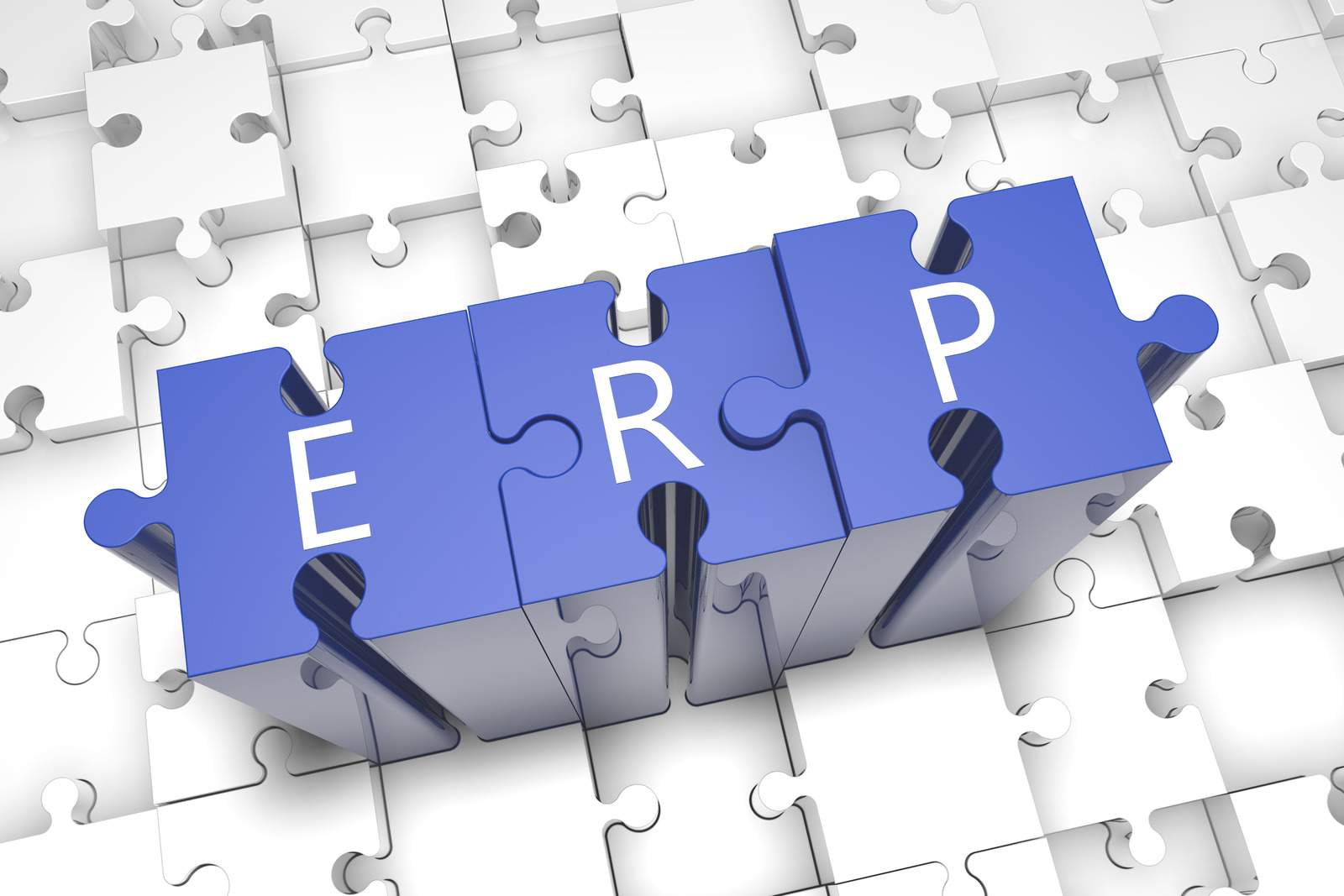1 min read
Is the Cost of Your Current ERP State Outweighing the Benefit?
If you are like many companies, you have taken advantage of point solutions to address unique business opportunities that have come up since...

One of the major players in Enterprise Resource Planning (ERP) software is the Oracle E-Business Suite. You may hear it referred to as Oracle EBS, e-BS, EB-Suite, eBus, Oracle ERP, or E-Biz. For the purposes of this article, we’ll use the acronym EBS. It’s a highly-ranked offering with tons of features, so let’s take a look at some things you need to know about it.
Oracle E-Business Suite (EBS) is a leader in ERP software. It’s made up of several applications that help companies run nearly every aspect of their business.
Users log in from a central dashboard and manage whatever tasks they need to do at that time. They can take care of associated activities for a multitude of items, including financials, order entry, HR, assets, SCM (supply chain management), CRM (customer relationship management), logistics, and other common business tasks.
The roots of Oracle’s E-Business Suite date back decades, when the product was written to handle financials. Nowadays, it’s a diversified system built on multiple technologies, ready to offer a comprehensive solution to business needs. Oracle’s EBS technology stack has expanded over the years to include Apache Web Server, Oracle Reports Server, Oracle Forms System, Oracle Discoverer, Java (Sun), and Oracle Jinitiator, among others.
Oracle EBS holds a large portion of the market, making it a key vendor in North America and parts of Europe and Asia. Because of its flexibility for companies of all sizes, it is a leading option for many businesses looking for new ERP software.
EBS is a robust offering with multiple opportunities for customization. Applications called Command Centers allow users to do almost any task necessary in order to run a business successfully.
Oracle strives to provide a modern user experience and mobility while enabling highly available, low-cost operations. Functional categories handle important tasks:
EBS is customizable, but it’s also designed to help businesses ramp up quickly and use it out of the box. Let’s take a closer look at a few of the available features.
Top of mind for all businesses is how an ERP system can interface with financials. Executives need to be able to get a good understanding of the financial state of the business without involving needless steps and extra manual processes. And, of course, collecting outstanding balances is essential to keeping income flowing.
The EBS Financials category includes several products:
As an example, let’s take a look at Accounts Receivable. Agents can use the system to prioritize which customers to collect outstanding money from first. A clickable invoice report can be sorted in order of age. Then, it’s possible to drill down to see which customer has the largest balance within that bucket, and ultimately view the list of individual invoices that make up the total. So within three clicks, a user is able to see the exact invoice that they should be contacting the customer about.
Another command center in the Financials area is Payables. The Accounts Payable module helps your business pay its bills on time, but not too early– and can assist in identifying opportunities for discounts that may arise by paying early.
In the Assets area, EBS helps identify issues that may affect your period close, thus improving your overall asset utilization.
Users have described cumbersome financial reporting as a system limitation. But the trade-off is that most EBS modules allow employees to enter their own data, seamlessly integrating with accounting in real-time. Companies using the EBS can find value in the system’s ability to reduce costs and increase profitability, especially when it comes to viewing financials as they occur.
The E-Business Suite offers order management features like advanced procurement, value chain management and planning, order management, asset lifecycle tools, and manufacturing management.
The EBS Order Management command center manages aspects of inbound customer orders. On a granular level, you can even expedite certain orders, or remove holds that may be on orders which are preventing them from shipping.
Order Management also gives you tools for dealing with newer subscription models of business, including time-driven models such as associated warranties or service plans. Billing is adaptable, too. Billing can be open-ended, recurring, or milestone. Recent product enhancements also include options for usage-based billing if you have rental contracts, subscriptions, or usage-based invoicing.
An EBS Inventory Management command center helps you streamline inventory activities and quickly act on exceptions. You can optimize order releases, prioritize late orders and back orders, and coordinate releases with carrier appointments to facilitate delivery.
In logistics, the system also has the capability to integrate Transportation Activities. You can schedule dock doors, complete fulfillment activities on-time, calculate weight and volume for tendering, and modify shipments if the wrong truck arrives, for example.
Oracle is making strides to improve its user interfaces that used to be achieved only through Forms.. On the Procurement side, EBS now enables consumer-like shopping behavior, with simple graphical point-and-click options for its procurement users. Helping ease the use of procurement can also aid in minimizing non-catalog spend. It streamlines the shopping experience for employees and reduces buyer administration through automated document management and adaptive approval rules.
Users can go about requisitioning just as they would shop for goods on the internet, using a modern, attractive interface that guides them to negotiated items and preferred suppliers. The system collects customer feedback and can improve the content, which ultimately drives better contract utilization and renegotiation.
The procurement command center also helps analyze how well requisitioners are responding to the items in your catalog and can identify problems that may arise with suppliers. Users can take corrective action, make exceptions, and manage against dates.
The Oracle E-Business Suite also contains tools to help manage projects: analytics, billing, contracts, collaboration, costing, management, resource management, and portfolio analysis.
Project Costing can make your accounting more accurate and help you close your books faster. It can identify period close issues and help correct capitalization or expense errors. Costing can also troubleshoot expenses that may be assigned to the wrong project or task.
On the Project Billing side, a concept called Billing Groups helps you separate activities. You can accrue revenue and bill separately for different types of expenses.
While not a comprehensive HR system, Oracle’s E-Business Suite allows you to architect a global foundation for HR data and improve business processes. The tools may help to increase productivity, accelerate business performance, and lower your cost of ownership. Modules include Human Capital Management (HCM), Global Core HCM, Workforce and Service Management, and Talent Management.
In the Human Capital Management area, a command center helps you browse the organization to find the right people. You can search by a particular location or a particular job grade with a particular competency so that you can assign them to a task.
Another bonus: Most of the activities available in the HR applications can be done through a smartphone app. Managing the workforce through EBS helps achieve organizational goals and meet business demand. The administration is simplified through automated time capture and absence management. And it makes sense that labor costs are minimized when you efficiently schedule, monitor, and manage your people.
EBS includes command centers to help manage how your customers interact with you and vice-versa. It includes tools to support your efforts dealing with:
Using EBS Service commands, businesses can expect to increase on-time renewals, drive conversion rates, improve customer satisfaction, coordinate activities between renewals and service teams, and identify the top contracts that require immediate action.
For example, you can zero in on expiring contracts or identify service requests where you’re at risk of not meeting your service level agreement (SLA). The clickable interface makes it easy to ensure customers get the attention they need.
If your business requires parts that come back to you in need of repair, the Depot Repair command center can help you identify bottlenecks. And Oracle is incorporating a new capability– machine learning in the E-Business Suite– where EBS makes prescriptive recommendations based on the problem report that customers submit. So, by the time the goods come back to you to be repaired, you’ve already received the right maintenance parts in stock at the repair center.
Oracle EBS Supply Chain Applications aid companies in staying flexible with chaotic product supply and marketing cycles. They’re able to predict market requirements and align operations across global networks.
Oracle’s goal is to find insight within the data. Supply chain management correlates all the relevant feedback concerning a particular product or service, including design, production, quoting, and customer processes.
Oracle has been busy improving many interfaces and adding alternatives to Oracle Forms. Users can now find features of the Supply Chain application that are mobile-friendly, allowing Android or iPhone tablets and devices to manage supply chains in the field. Using a mobile device, the module supports complex barcodes that can be scanned and interfaced directly into EBS.
The mobile solution allows workers to cut processing time and gain efficiencies by inputting data directly from the warehouse floor.
Manufacturing has three command centers. One is called Discrete Manufacturing, which can help with supply chain disruptions. It can pinpoint production bottlenecks or component shortages that may prevent order completions and identify possible substitute parts.
Another feature is the ability to track expiration dates. This way if your ingredients are time-sensitive, you can allocate lots before they expire.
Outsourcing manufacturing is supported through a command center that identifies potential problems which manufacturing partners might have with replenishment orders.
On the Enterprise Asset Management side, a command center helps identify and relieve maintenance bottlenecks. For example, if something breaks you’re able to service the emergency by allocating and prioritizing available technicians and parts.
Oracle’s customer relationship management (CRM) solution is a set of applications that use shared, authentic data to drive sales, service, and marketing. It’s built on an open, standards-based architecture that streamlines business processes and improves data quality.
Pretty much any activity you would need in a CRM is available: Over 50 specific applications, including Service, Channel Revenue Management, and Order Management are available. You can do anything from precisely measuring marketing campaigns to automatically dispatching field technicians to remote locations.
Originally, the E-Business Suite was written for use on-premises. This means it was designed to be physically installed on servers owned by the users– typically large, complex organizations who had experience managing hardware and the associated updates and risks.
Over time, and as technology has evolved, Oracle is gently directing the shift to encourage businesses to run E-Business Suite on the Oracle Cloud. Your business can use EBS without hiring people who know how to manage the firmware and hardware.
Running the Oracle E-Business Suite on the cloud allows the user to take advantage of benefits such as Infrastructure as a Service (IaaS) and Platform as a Service (PaaS). There are also optional management services that you can subscribe to such as Application Management Services. These services allow Oracle to handle the updates and release calendar so that you don’t need to hire or maintain additional labor.
Business growth can occur for many reasons: adding users, adding functionality or departments and countries, or acquiring business through mergers or acquisitions.
Running EBS on the Oracle Cloud expands the capacity of what you need an ERP to do.
If you have a lot of new projects, running in the Cloud allows you to subscribe to additional dev, testing, and production environments without the capital expenses that come from physical data centers on your premises.
In the past, major release updates have updated the technology stack together with new application code. Users had to install new versions of the Middleware platform, a new applications code level, and upgrade scripts to move to the new release level.
Oracle has now made it easier for users to take advantage of new technology. Oracle is moving to a continuous release model, where the technology stack will update separately. Now, E-Business Suite customers get more recent technology without having to update their application code.
Oracle’s E-Business Suite is a highly-ranked, popular choice in ERP software. It consists of many modules which strive to get the most insight out of enterprise data. With proper configuration and training, the software can improve and enhance an organization’s bottom line.

1 min read
If you are like many companies, you have taken advantage of point solutions to address unique business opportunities that have come up since...

In the ever-evolving landscape of business, staying ahead of the curve is imperative for long-term success. One of the crucial decisions facing...
.png)
Enterprise Resource Planning (ERP) systems are no longer just tools for industry giants—they’ve become the backbone of operational efficiency for...